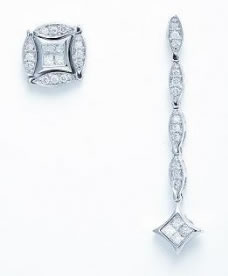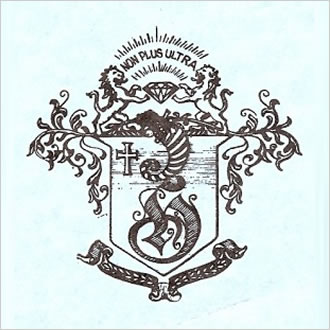DIAMOND BUYING GUIDE
The following “four C’s” are the main factors that make up the price of a diamond. All four C’s interact with each other and no one is more important then the others. Understanding these characteristics will help you pick out the perfect diamond for your specific needs.
Carat
Carat is the measure of weight for gems. It has nothing to do with size. The way a diamond is cut and how it is mounted can make a diamond look bigger or smaller regardless of its carat or point size (100 points= 1 carat). Please be aware that larger diamonds are more rare then smaller diamonds. This is why the price of diamonds rises exponentially as the carat weight rises. For example, a 4ct diamond will not be twice the price of a 2ct diamond (assuming the other three C’s remain constant.) The 4ct will be substantially more then twice the price of the 2ct. because there are so few of these diamonds found in the mining process.
Clarity
A diamond’s clarity is graded on the number, location, size and type of inclusions found within the stone. An inclusion is either a mineral or fracture that occurred while the diamond was being formed by nature. These inclusions may look like crystals, specs or even clouds. Diamond clarity is graded on a scale from “F” (flawless) to “I” where inclusions can be seen by the naked eye (without the use of a 10x loupe.) The more inclusions, the less valuable the stone and the less fire and brilliance the stone will have.
Color
Diamonds can have a significant range of color and the more colorless the stone, the more valuable. The scale range starts at D (colorless) to Z. (There is no A, B, or C.) Grades D though I are colorless to near-colorless while J through Z will have hues of yellow to brown. As inclusions will affect the brilliance of a stone, the more color a stone has, the less brilliant it will appear. The difference of these shades is often very subtle and can only be measured by an expert. As you might expect, the stones with less color are more rare and therefore more expensive.
Cut
The cut of the diamond refers to the proportions and angles of the finished diamond. Every facet of the diamond must be cut and then polished to precise specifications. Scientific formulas map out how to best cut a stone so light will reflect from one facet to another until it finally disperses through the top of the stone. The better the light reflects out, the greater the fire and brilliance, the more expensive the diamond. For example, a diamond that is cut too deeply will disclose light through the sides where a shallow-cut diamond will lose light through the bottom. Diamond cutters have different parameters for each cut of the “fancy shapes” (princess, emerald, marquise etc) to produce a stone with great fire and brilliance.
Although you are better off using a certified expert to help you select your diamonds, this brief guide will help you understand the basics of diamond valuation and increase the likelihood that you end up with what you are looking for. Let us know what we can do to help!

4000 Dixie Highway NE
Palm Bay, FL 32905
(321) 725-3451
info@palmbayjewelers.com
The Herbst Family Crest

